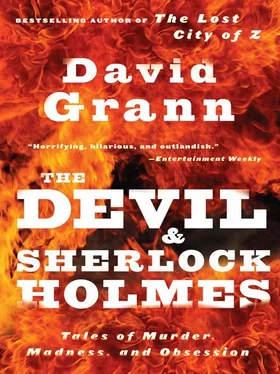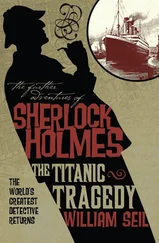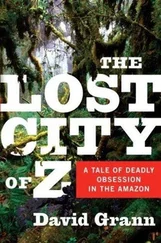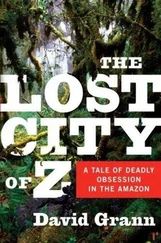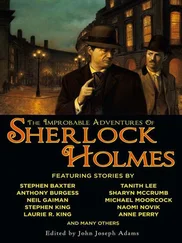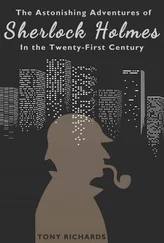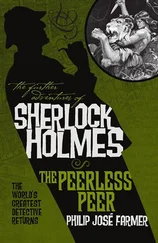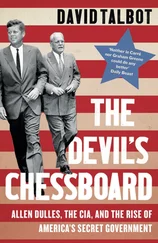Even though the Benton trial involved only one A.B. member and two associates, the United States Marshals walled off the entire building. For the first time in the court’s history, cement barricades had been placed around the exterior. To get inside, I had to pass through two metal detectors.
Nearly a dozen marshals, dressed in black suits and black shoes, led the defendants, whose wrists and ankles were shackled, into the courtroom. Sahakian wore gray slacks and a gray short-sleeved shirt. Everything about him was big: his hands; his stomach; his long, sloping forehead. Whereas in old photographs he had an unruly beard—it apparently had inspired his nickname, the Beast—now he had only a goatee, which made his face look even larger.
His wife was in the gallery, and he winked at her as he sat down. She told me that they had met twenty-five years ago, and that for twenty-three of those years he had been behind bars. Petite, with blond hair and a blue miniskirt that exposed well-toned legs, she gave off a strong scent of perfume. She sat right behind him, taking notes throughout the trial. At one point, she told me, “They keep saying he’s a boss of the Aryan Brotherhood and that he ordered everyone around. But I don’t believe it. He can’t even order me around.”
When a pathologist took the stand, the prosecution projected on a large screen a photograph of Walker’s body. It was stretched out on a metal table. There were bloodstains on his chest, his eyes were open, and his mouth appeared to be frozen midspeech. The pathologist described each stab wound. Then he pointed to a hole in the heart—it was the one that killed him, he said.
None of the defendants looked up at the screen, and, apart from the marshals and Sahakian’s wife, the gallery was empty. Nobody from the victim’s family was there. Jessner had told me that most of these victims had already been cast out by society, and, when they were killed, few people, if any, cared. “I feel a certain obligation to defend those who have no one to defend them,” he had said.
After a break in the trial, the defendant who had purportedly held the victim down during the attack refused to come out of a holding room. The judge ordered the marshals to forcibly carry him out. Sahakian leaped to his feet and said that that wasn’t necessary. “If I go back there,” he said in a commanding voice, “he’ll come out.” At last, a marshal went out to the holding room and escorted the defendant into the courtroom. He walked with pointed slowness and stared at the prosecutor. “What the fuck you looking at!” he yelled.
Six marshals quickly hovered around him. As he sat down, he slammed his chair into the groin of one of the agents. Eventually, order was restored, and, when an inmate who had helped stab several black inmates took the stand as a government witness, Sahakian rubbed his fingers along the arm of his chair. Each time the witness made allegations against Sahakian, he seemed to grip the chair more tightly. His knuckles turned white. Finally, he glanced toward me in the gallery and said, “Don’t believe a word he’s saying. He’s nothin’ better than a shit-house rat.”
“Don’t use that language, honey,” his wife said.
“Metaphorically speaking,” he said.
Several inmates who had told authorities that they were prepared to come forward had also said that they were frightened to do so. One said that since he had turned on the A.B. his family had been threatened. Another, who had provided evidence, was staying in his cell, clutching his rosary beads. He said, “I’ll say my prayers that I don’t get about seventy-five holes in me.”
Jessner was sitting at his desk at his headquarters in Los Angeles, preparing pretrial motions. While he was awaiting a verdict in the Benton trial, he needed to get ready not just for one trial but for potentially five or six—since not all forty defendants could be held safely in one courtroom. Security was already a challenge; most of the inmates, including the Baron and McElhiney, were being held in single cells at the West Valley Detention Center, outside Los Angeles. Some defendants had been found with drugs and concealed razor blades.
Fearing that the gang might turn on its own, Jessner had placed a few A.B. members in other prisons. In a letter, the Baron had told another gang member, “It’s likely necessary for us to step-up and conduct a thorough evaluation of every brother’s personal character and level of commitment, as we currently possess some serious rot that is in fact potentially a cancer!” He added that it should be “a top priority to wipe them off the face of this earth!”
Jessner said he knew that the gang was trying to hold on to its operations, but he was optimistic about the upcoming trials. “I can’t say for sure if another gang will take the Brotherhood’s place, or if new leaders will replace the old ones,” he said. “But I know that if we succeed it will send a message that the Aryan Brotherhood can no longer kill with impunity.”
Jessner got up and started heading toward the courtroom, to attend a pretrial hearing. He was wearing a charcoal suit that seemed too loose for his small frame. I asked him if, as some feared, he had been “put in the hat”—marked for assassination.
He blanched. “I don’t know,” he said. He later added, “It’s a pretty big hat.”
The United States Attorney had arranged extra security for him, including a secure parking space nearby. One of his colleagues had declined to work on the case after his wife objected. “I worry,” Jessner admitted. “You can’t help but worry.”
He paused and looked at me. He wouldn’t feel right if he stopped, he said. “I don’t believe that because you rob a convenience store you should receive a death sentence. I don’t believe that our prisons should be divided into predators and prey.” As he headed into the courtroom, he added, “I don’t believe that that is what our system intended by justice.”
—February, 2004

The case against the Aryan Brotherhood produced nearly thirty convictions. The gang’s two most feared and powerful leaders, Barry Mills and T. D. Bingham, were found guilty of murder, conspiracy, and racketeering. The jury, however, deadlocked on whether they should receive the death penalty, and they were sentenced to life without parole. David Sahakian, whose initial trial in Benton led to a hung jury on the count of ordering the murder of Terry Walker, was later retried and found guilty. He was sentenced to twenty years. After failing to obtain the death penalty against other leaders of the gang, the prosecution dropped charges against Michael McElhiney; he is not expected to be released from prison until 2035, when he will be seventy-eight years old.
Crimetown, U.S.A.

 THE CITY THAT FELL IN LOVE WITH THE MOB
THE CITY THAT FELL IN LOVE WITH THE MOB 

There was a certain tidiness to the killings in Youngstown, Ohio. Usually they happened late at night when there were no witnesses and only the lights from the steel furnaces still burned. Everyone suspected who the killers were—they lived in the neighborhood, often just down the street—but no one could ever prove anything. Sometimes their methods were simple: a bullet to the back of the head or a bomb strapped under the hood of a car. Or sometimes, as when they got John Magda, they went for something more dramatic, tranquillizing their victim with a stun gun and wrapping his head in tape until he could no longer breathe.
Читать дальше
